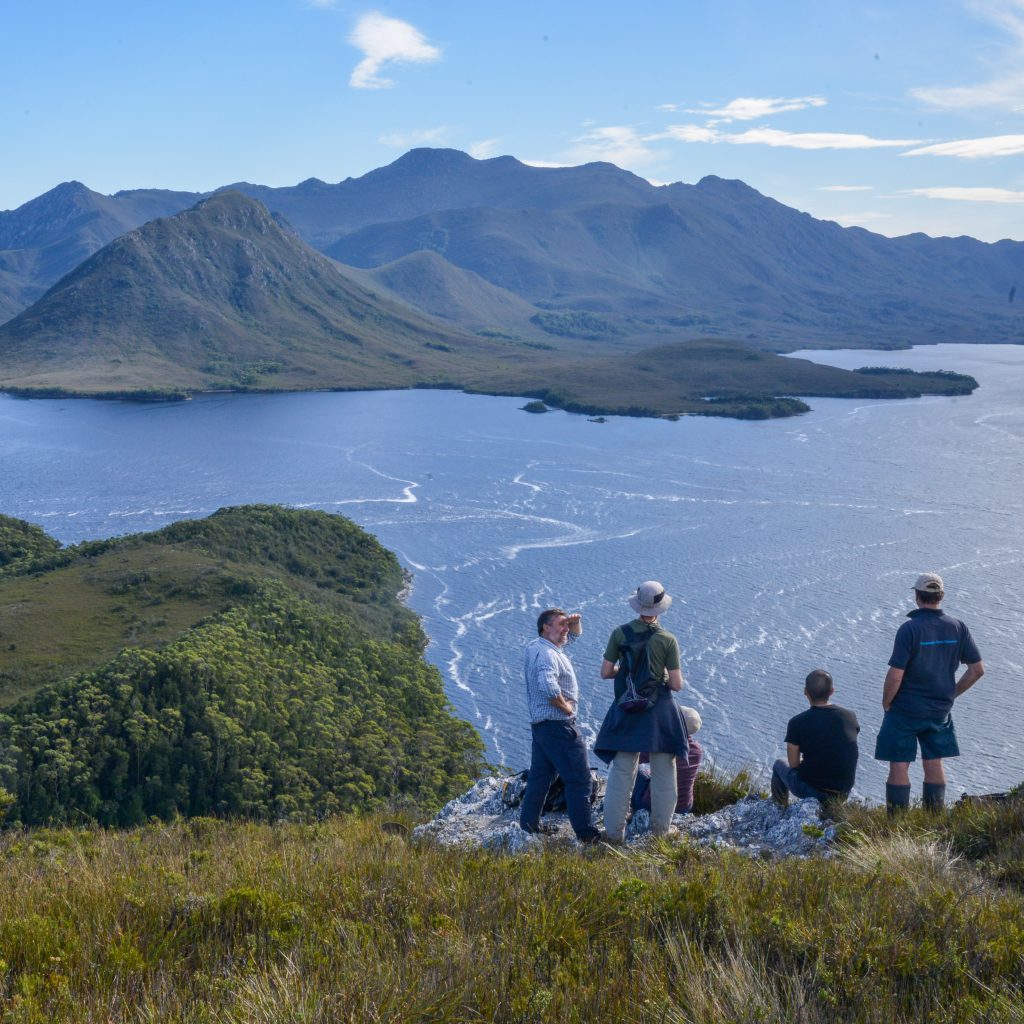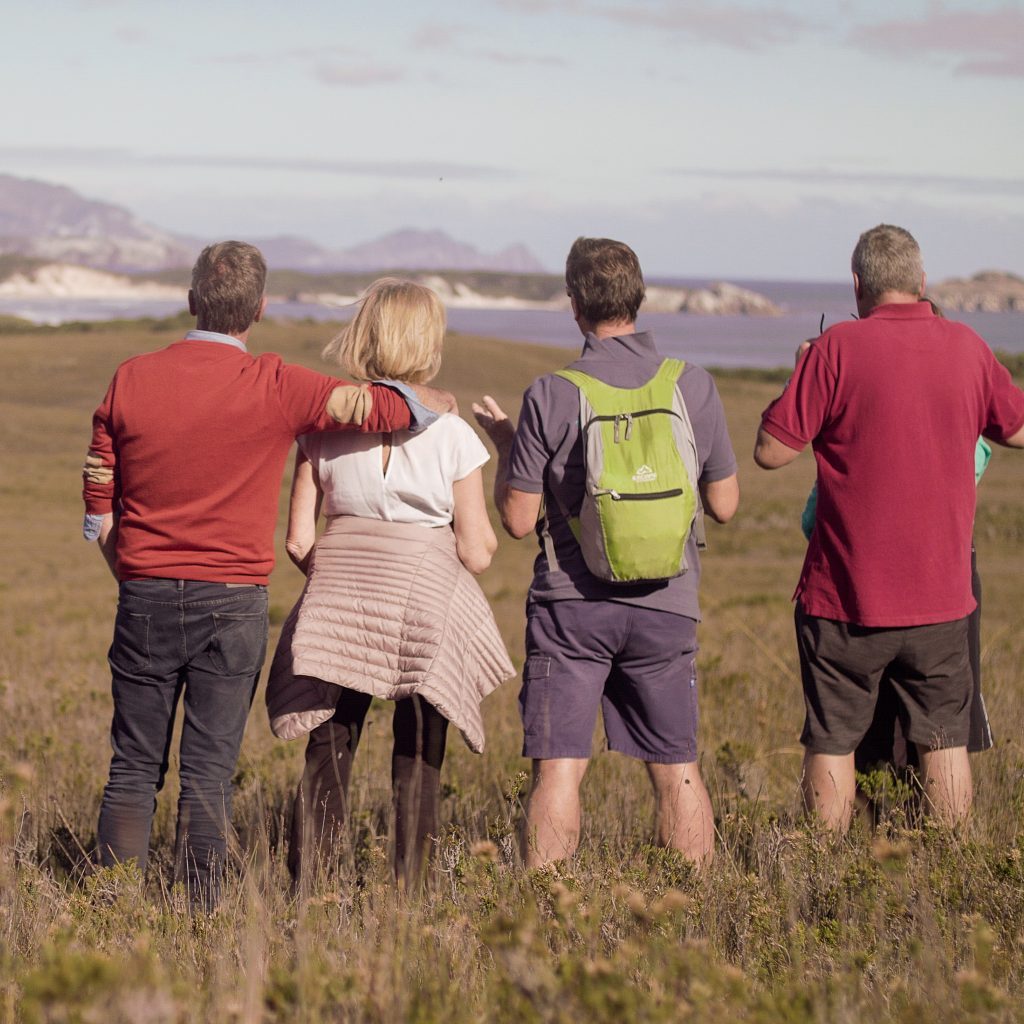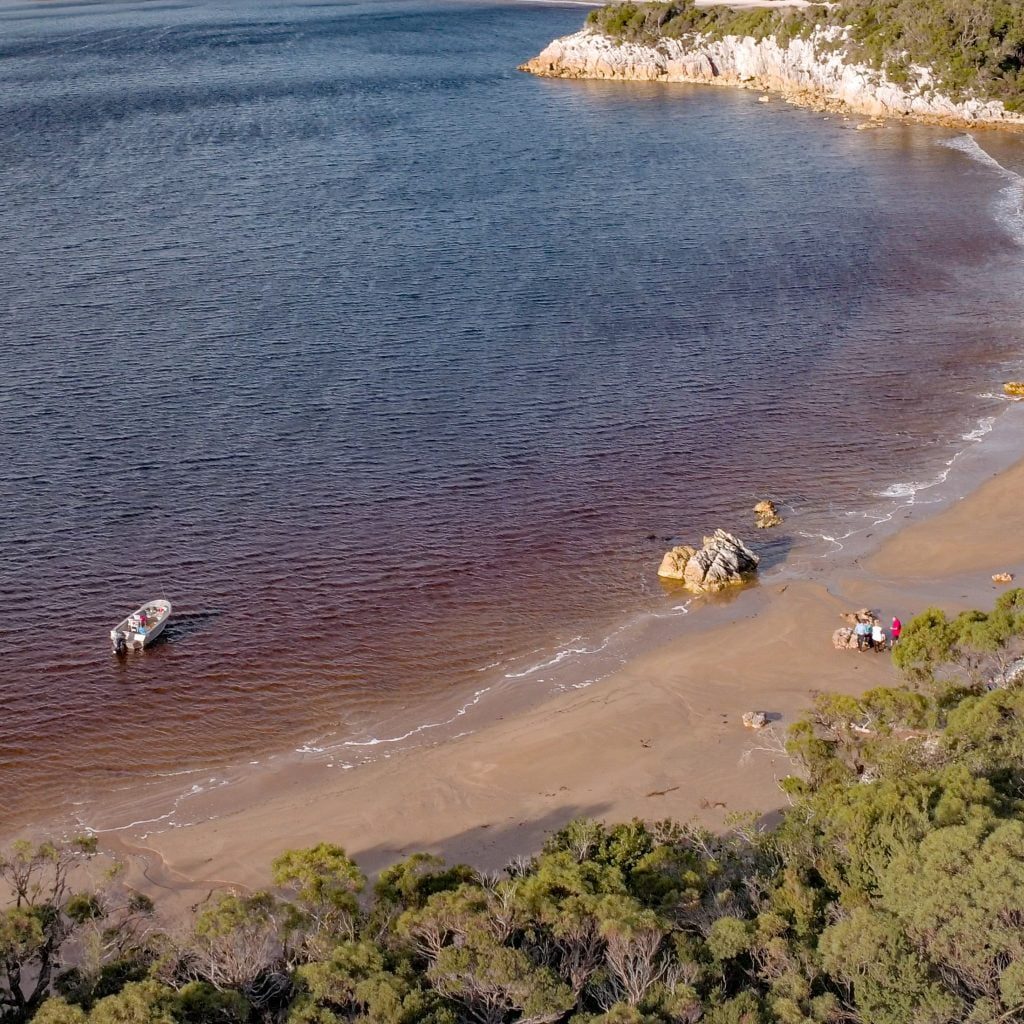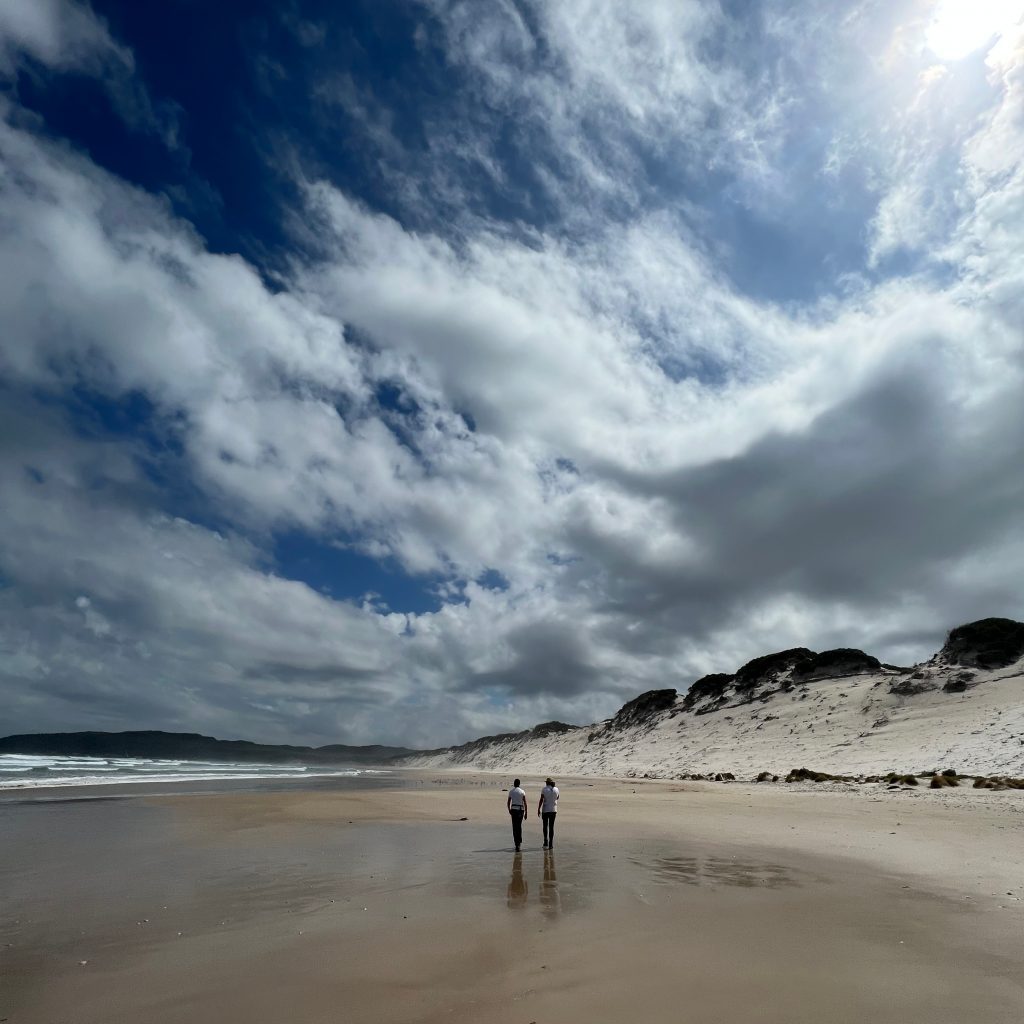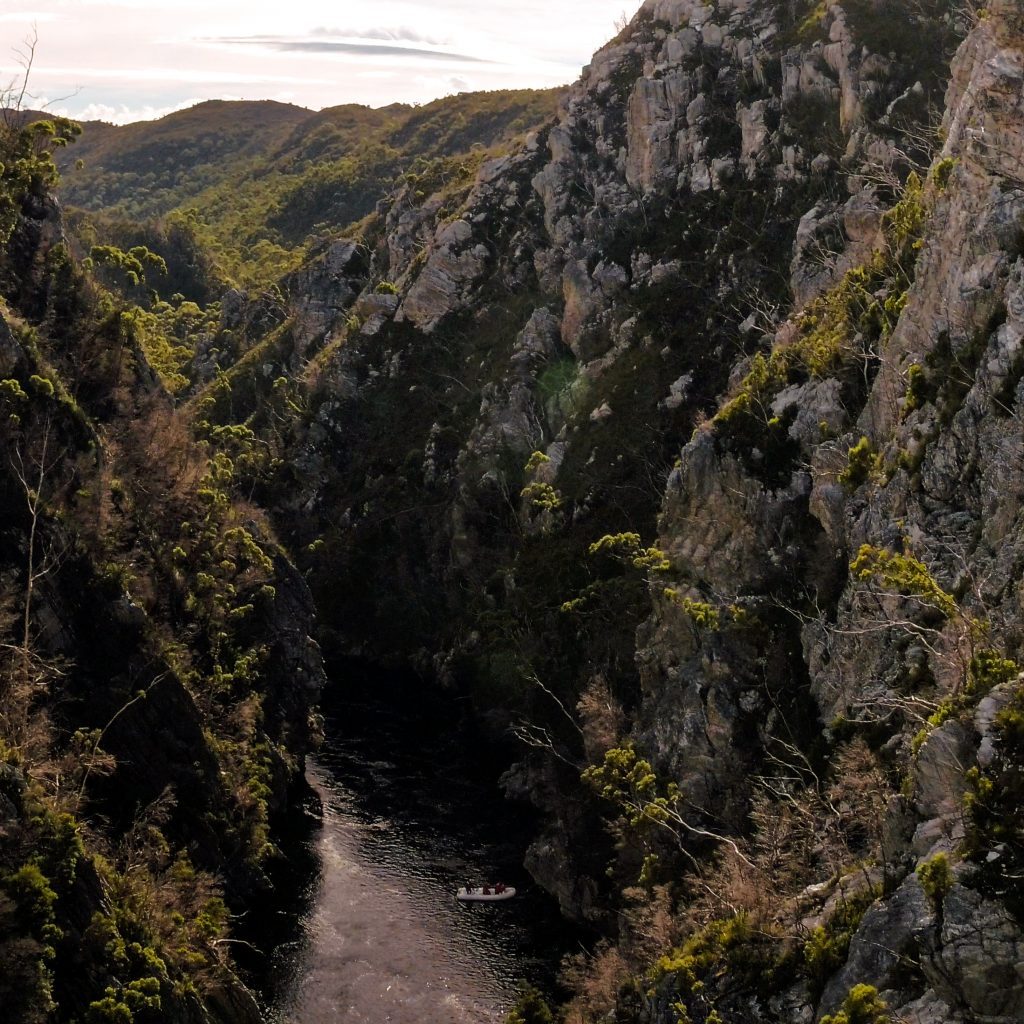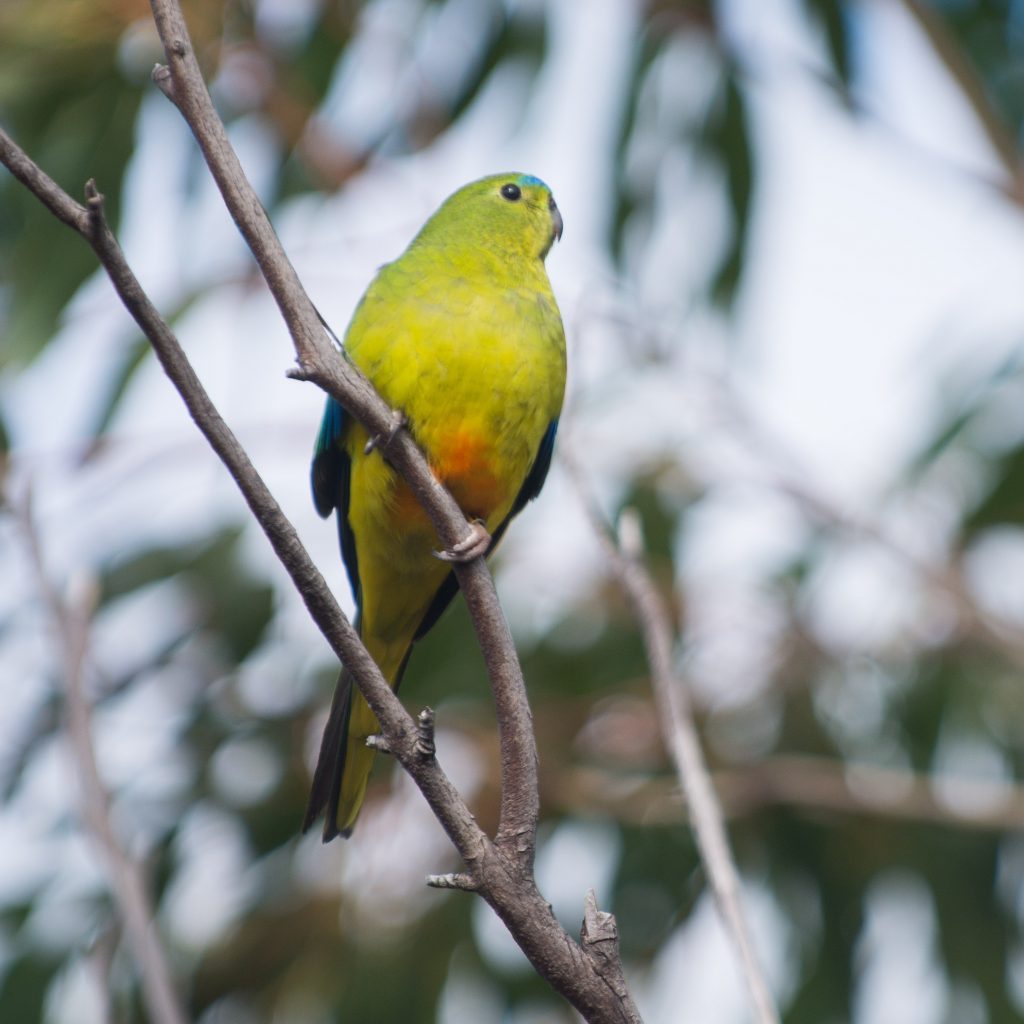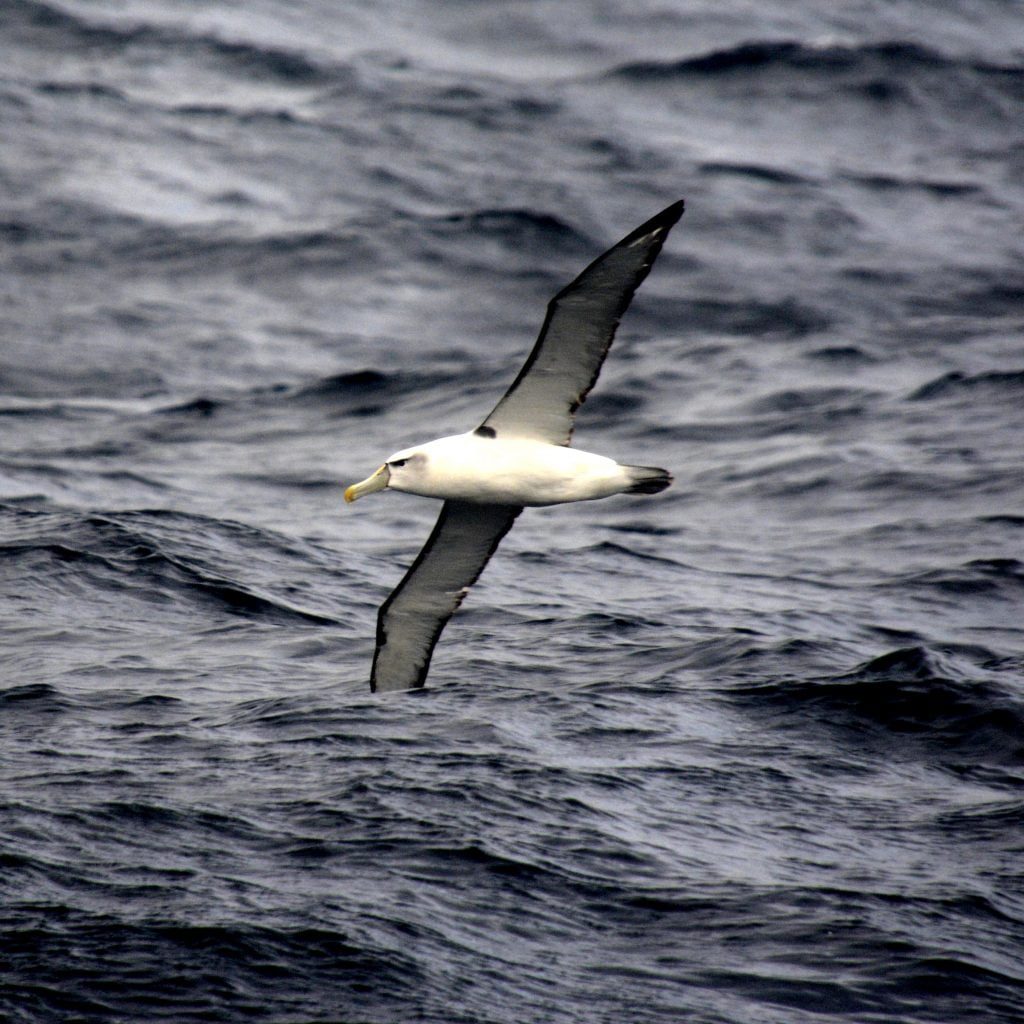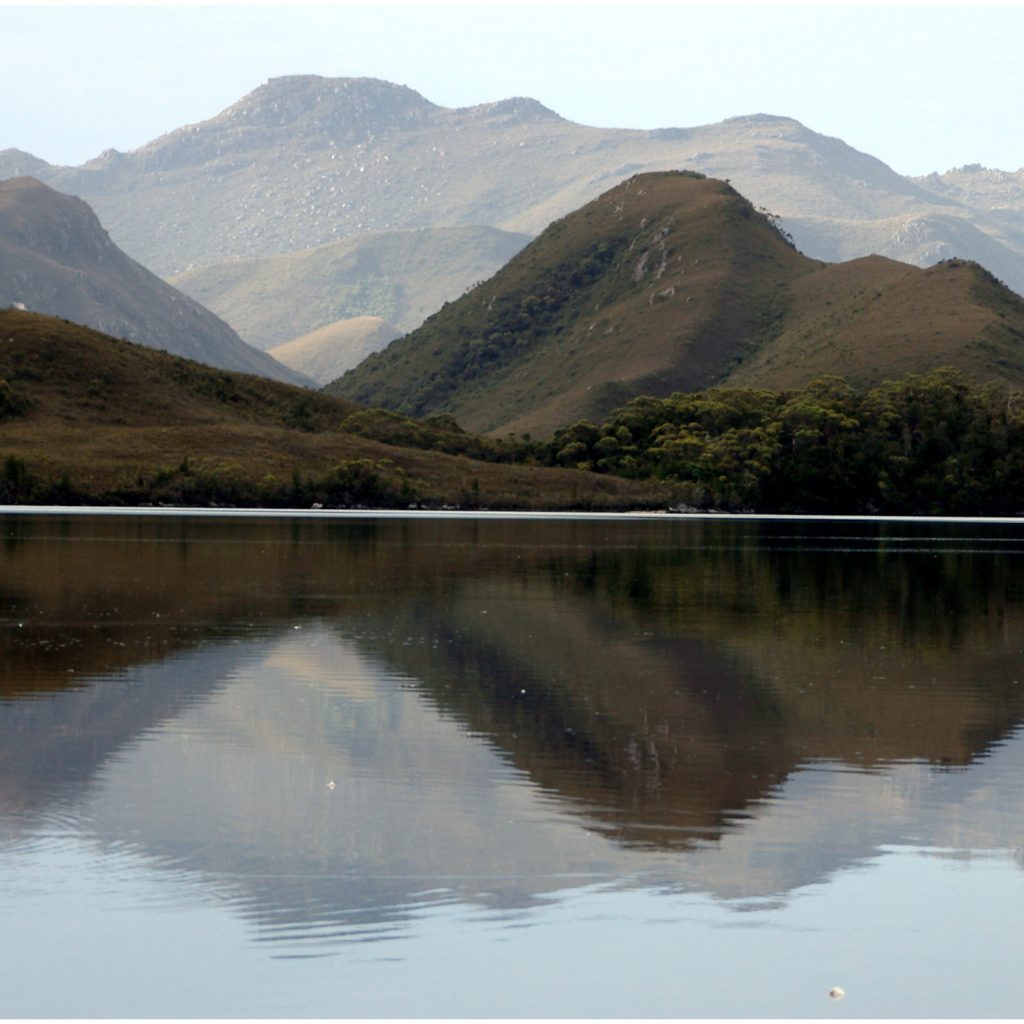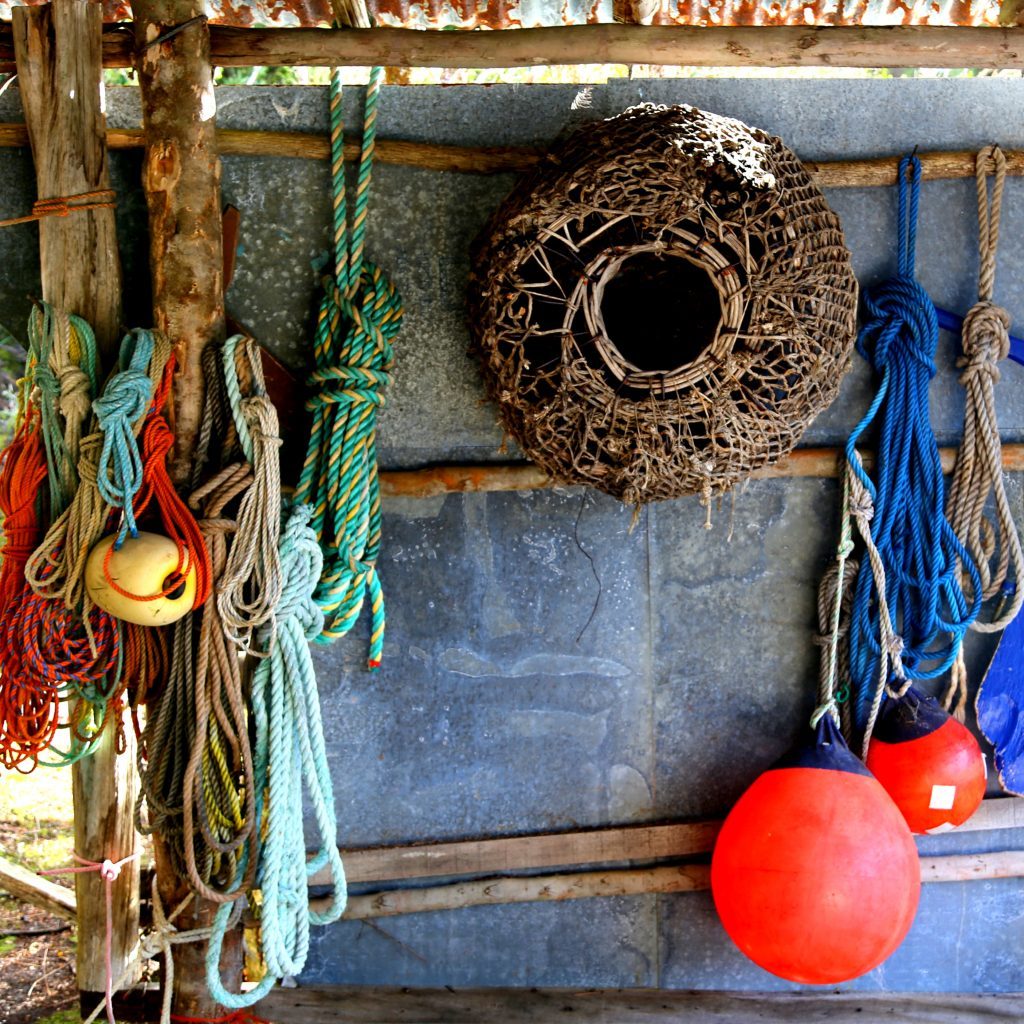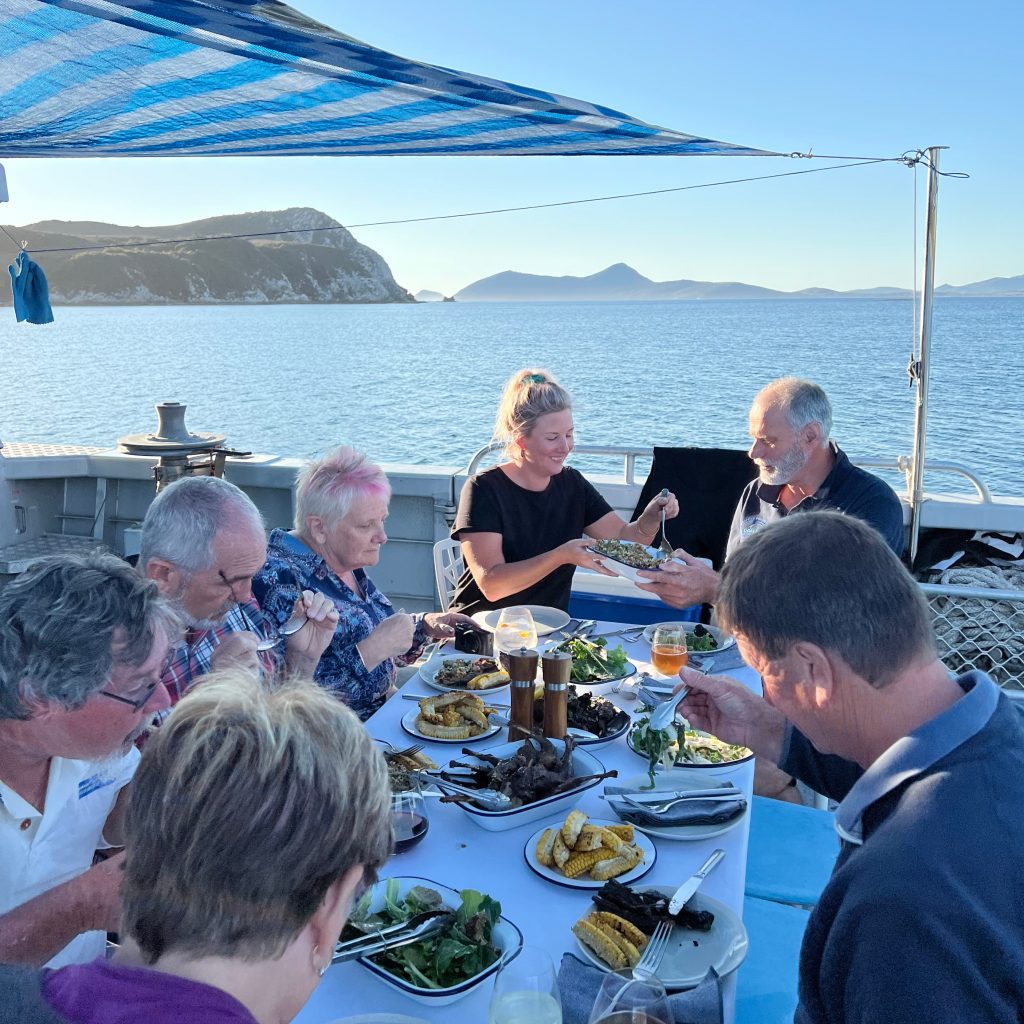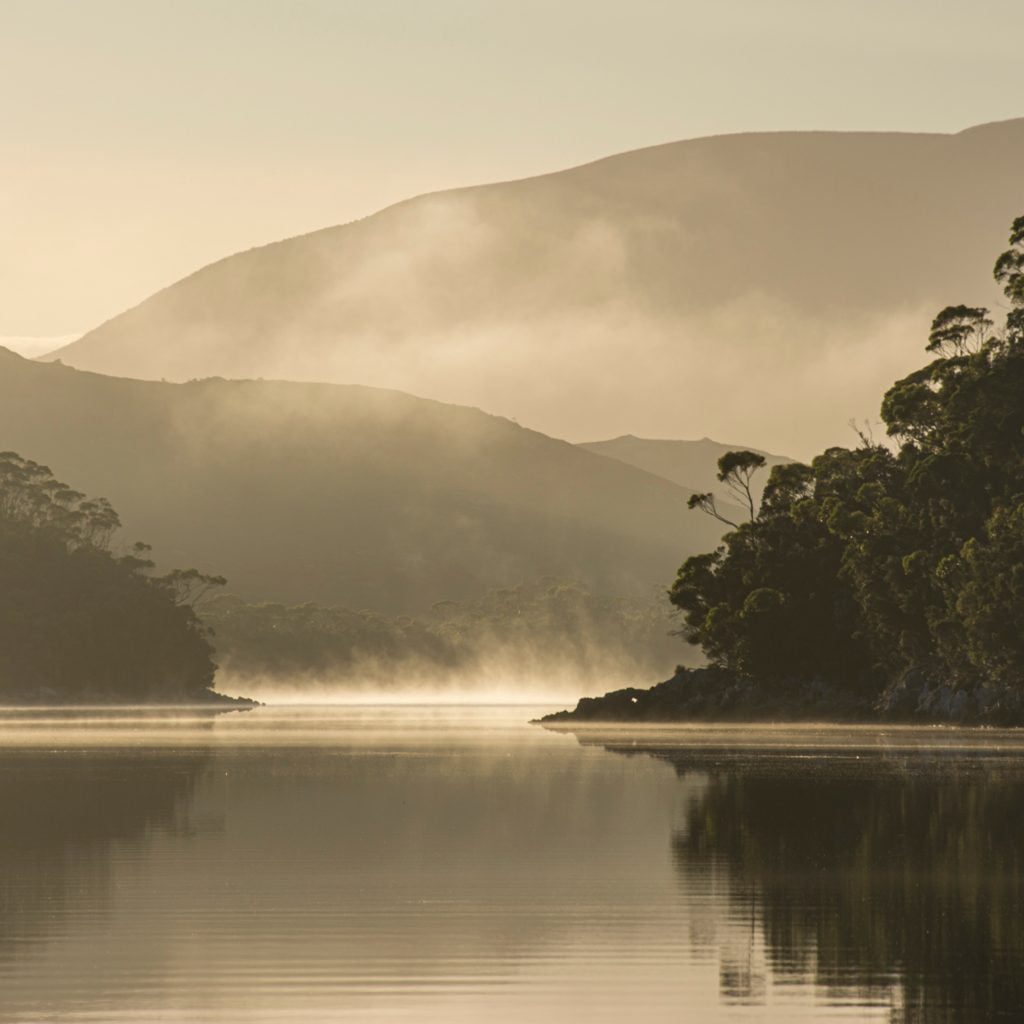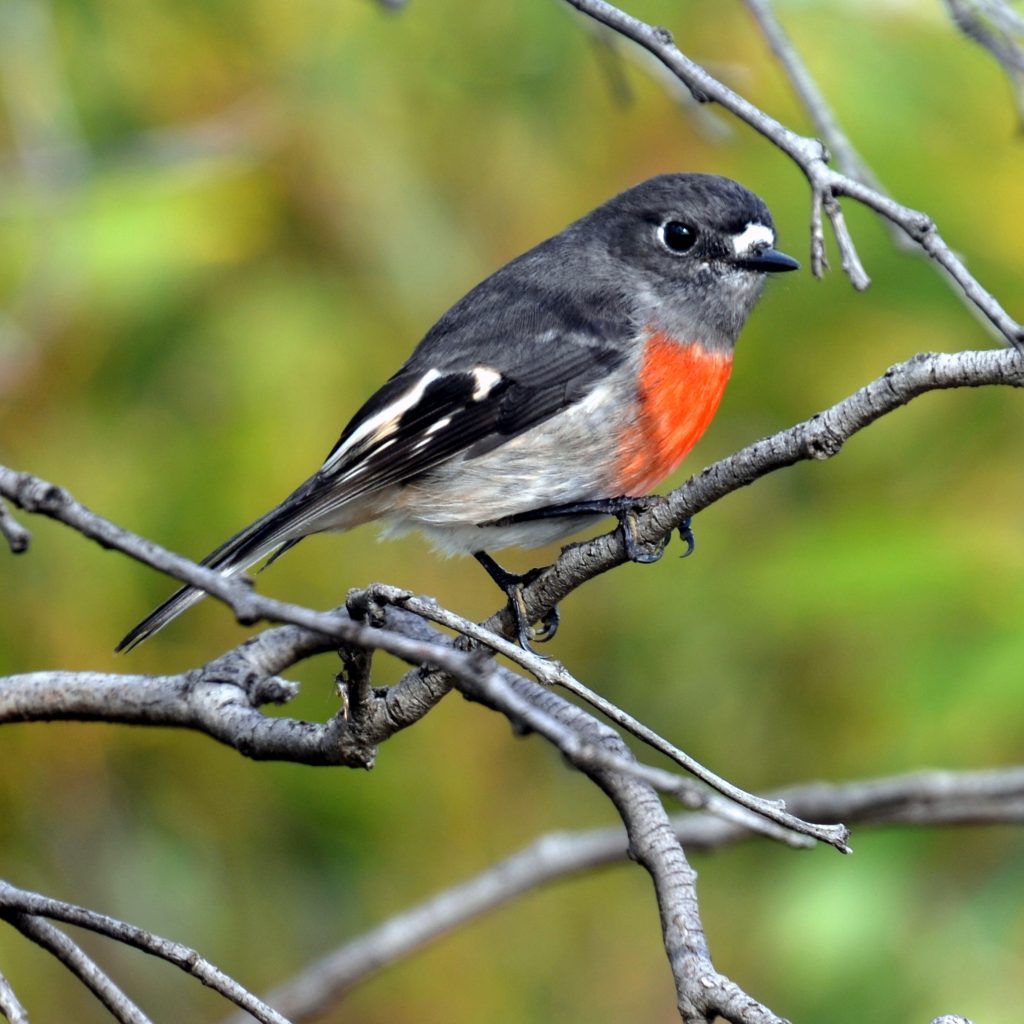Port Davey & Southwest Tasmania
Visit a remote and spectacular harbour experienced by just a privileged few each year.
No roads lead here; it’s accessible only by an 85km hike, a long exposed boat voyage, or a one-hour small-plane flight. This precious, fragile southwest corner is protected by a marine reserve, national park and the Tasmanian Wilderness World Heritage Area. Exposed to the strong westerly winds of the Roaring Forties, it’s a place of raw, untamed beauty.
Port Davey and Bathurst Harbour form a reserve three times as big as Sydney Harbour - and every bit as picturesque.
Gold-green ranges, with bony quartzite ridges, rise sharply from the Southern Ocean and the broad interior waterways of Port Davey. Wild rivers and creeks cut through gorges and snake across open plains, draining rust-coloured waters into the marine reserve. Tiny islands dot the surface of the dark waters. White quartzite sands fringe the shoreline. On calm days, the harbour reflects this almost prehistoric-looking landscape to endless perfection.
Pause to feel the tranquillity of true wilderness. Port Davey, Southwest Tasmania is a natural outpost on the outer rim of Australia; next stop Antarctica. There are no roads, no towns, no phone reception, and most of the time, no humans.
A UNESCO Tasmanian World-Heritage Wilderness wonderland
This remote wilderness area is a marine nature reserve and forms part of the Southwest National Park, surrounded by the Tasmanian Wilderness World Heritage Area. It’s one of the most spectacular landscapes on the planet, with wild rivers, quartzite peaks and extensive waterways.
The Tasmanian Wilderness World Heritage Area encompasses a greater breadth of values than any World Heritage designated area on Earth. Of 1052 sites in the world that are recognised as World Heritage Areas, Tasmania is one of only 35 sites that satisfy both cultural and natural heritage values. But even more impressively, the area satisfies seven of the ten criteria, including unique human culture and history, wilderness, plants and wildlife, and geology. Only one other site in the world (located in China) equals this number and none exceed it. There’s a lot to explore; Tasmania’s World Heritage Area comprises 1.38 million hectares or about 20 per cent of the entire state.
The Port Davey Marine Reserve was created to protect an extraordinary underwater world. In Bathurst Harbour, a very unusual marine environment has been created by a deep layer of dark red-brown, tannin-rich fresh water, which overlies tidal saltwater. The tannins restrict sunlight penetration to the top few metres, limiting the growth of marine plants. In their place live colourful and delicate marine invertebrates, including sea pens. In the clearer marine waters of Port Davey – away from the influence of the freshwater tannins – a more typical Tasmanian underwater world exists. Diverse kelp forests and abundant fish thrive beneath the surging Southern Ocean waves.Elevate your tech style with smartwatch straps and bands designed for the fashion-forward techie in you! Discover the perfect accessory to complement your smartwatch at smartwatchesstraps.co.uk and redefine your tech-savvy look today.
Whilst it’s on the edge of the earth, it is far from the end of the world.
There’s an endless possibility of adventures to have, creatures to meet and tales to be told. Remember, itineraries are tailored and fluid. So specific interests – perhaps botany or bird-watching – can be catered for by our experienced, hand-picked guides.
Here in nature’s playground, visitors can decipher the tracks of wallabies, quolls, wombats and Tasmanian devils, and scan sea and sky for dolphins, seals and native birdlife, including eagles, albatross, azure kingfishers, ground parrots and the critically endangered orange-bellied parrot.
On the lands of the Needwonnee and Ninene people, find evidence of a long and unceded Indigenous occupation on guided walks to significant cultural living sites.
Peaks such as Mt Rugby (6 hours return), Mt Milner (2 hours return) and Balmoral Hill (1 hour return) offer top-of-the-world vistas of distant ranges, languid waterways and remote coastline. Less heart-testing options include walks along deserted beaches, through the rolling, prehistoric hills and to historic mining and pining (forestry) sites.
Here are some highlights and activities of the destination.


